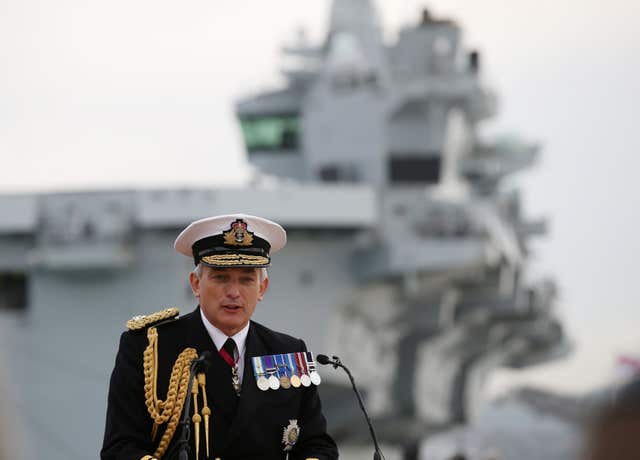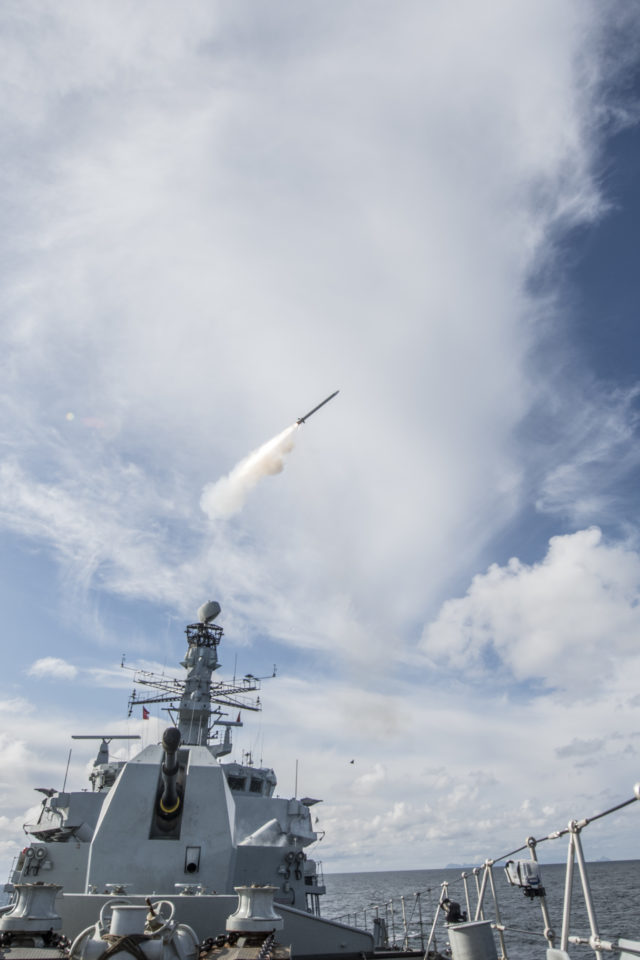
Heavily-armed pirates and state-backed militias pose a threat to Royal Navy warships including its new aircraft carriers, the country’s top admiral has warned.
First Sea Lord Admiral Sir Philip Jones said that as well as the naval challenge from other countries, such as the Russian fleet, there is an increasing threat from “non-state actors”.
His comments came as the new £850 million Sea Ceptor missile defence system entered into service.
It will be deployed on board the Navy’s Type 23 frigates and is said to be able to deal with multiple targets at the same time, protecting an area of around 500 square miles over land or sea.
Admiral Sir Philip said the UK is still around three years away from being able to deploy HMS Queen Elizabeth equipped with F-35B jets supported by escort vessels.
“We are envisaging at the moment an operational deployment of a full carrier strike group – this, of course, will include the frigates armed with Sea Cceptor, the air-defence destroyers, the tankers, the submarines, in about three years’ time,” he said.
Setting out the need for the new technology, he added: “It’s an evolving threat, it’s there now from nation states who are capable of contesting Western navies at sea … the Russians are clearly one of the predominant forces there.

“But also we are seeing a divergent threat – non-state actors are gaining increasing access to high-end capability that they can contest sea space with, and we need to be able to counter that, such that we can put the carriers into a place where they can achieve effect and do so safely.”
He told BBC Radio 4’s Today programme that piracy is one element of the threat, but there is also a challenge from groups which are “proxies” for other states, highlighting the Iran-backed Houthi rebels in Yemen.
“They have gone from no maritime capability at all to serious high-end anti-ship missiles, mine-deploying threats and the ability to detect contacts at sea, all in the last two years.”

MPs have warned about potential cuts to the fleet’s capabilities, but the Admiral said “we are increasingly getting the Navy that we need” through a “significant piece of modernisation”.
Amid concerns about the future of the Navy’s ability to land Royal Marines on enemy beaches, he said: “We need to keep an amphibious capability in the Navy as we go forward, and, as we recapitalise every other bit of the fleet, we need to recapitalise that as well.”
HMS Argyll will be the first ship to deploy with the system when she heads to the Asia Pacific region later this year.
Sea Ceptor is being fitted to replace the Sea Wolf system on the Type 23 frigates.


Comments: Our rules
We want our comments to be a lively and valuable part of our community - a place where readers can debate and engage with the most important local issues. The ability to comment on our stories is a privilege, not a right, however, and that privilege may be withdrawn if it is abused or misused.
Please report any comments that break our rules.
Read the rules hereLast Updated:
Report this comment Cancel